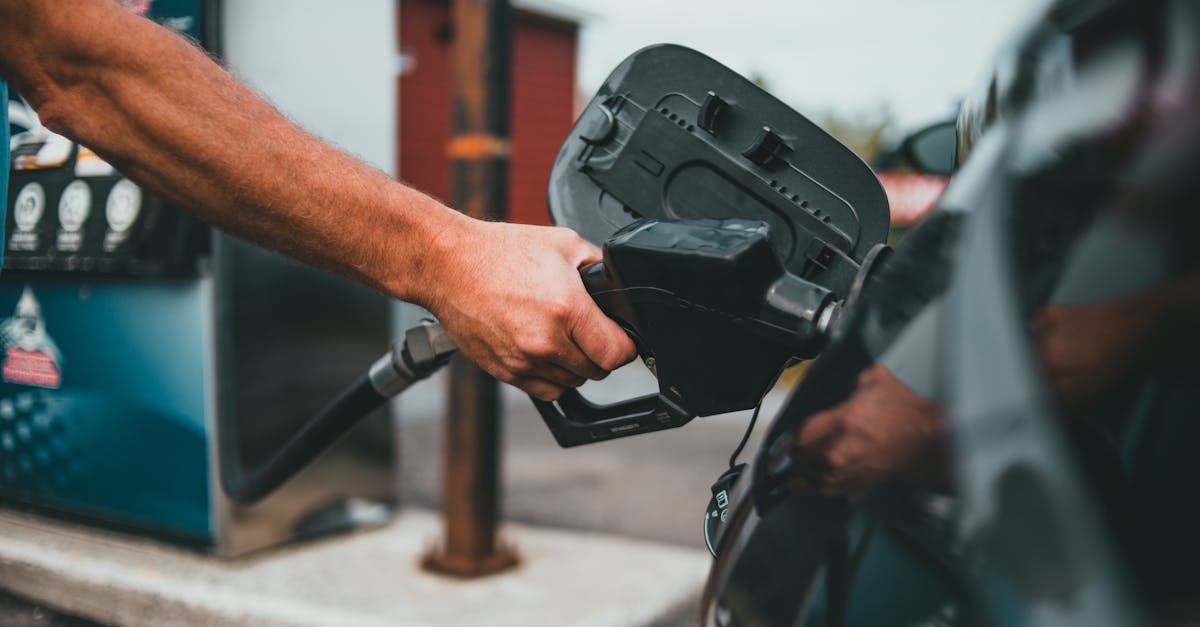Ever found yourself stranded with a dead phone battery miles away from the nearest outlet? I’ve been there, and it’s frustrating when your devices run out of juice just as you need them most. That’s why travel power stations have become my go-to solution for staying connected and powered up on the road.
These compact yet powerful devices bring a new level of freedom to any adventure, letting you charge multiple gadgets without hunting for a plug. In this text, I’ll share what makes travel power stations a game-changer and how to choose the right one for your journeys.
Features of Travel Power Stations
Travel power stations bring a simple solution to keeping your gadgets charged while on the move. I’ve found they balance convenience and functionality in ways that fit right into daily routines, whether you’re camping, working remotely, or just out and about.
Capacity and Power Output
When picking a travel power station, capacity matters. This refers to how much energy the device can store, usually measured in watt-hours (Wh). Think of it like the size of a gas tank—the bigger it is, the longer you can go without refilling. For example, a 500Wh unit can charge a smartphone multiple times or keep a laptop running for hours.
Power output, on the other hand, is how much energy the station can deliver at once. If you want to charge multiple devices fast or power something like a mini-fridge, look for higher wattage outputs on AC outlets or USB-C ports. My go-to model offers 300 watts continuous output, which handled my portable fan and laptop during a weekend outdoor work session without breaking a sweat.
Portability and Design
The whole point of a travel power station is to carry it easily, right? Portability isn’t just about weight (though I don’t love lugging around heavy gear). It’s also about shape and how comfy it feels to grab and go. Some units have handy handles or compact designs that slip neatly into backpacks or car trunks.
One travel power station I used weighed under 6 pounds but still packed a solid punch. It fit perfectly in my gear bag and didn’t throw off my balance while hiking. Plus, a tough outer shell means it stood up to the occasional bump or drop (which, trust me, is easier than it sounds when you’re juggling a coffee and a suitcase).
Charging Options and Compatibility
Here’s the kicker—travel power stations need to charge themselves, too. Many offer multiple ways to refill their battery, like traditional wall plugs, solar panels, or even car chargers. Solar compatibility is a big plus for longer outdoor trips where outlets are scarce.
On compatibility, look for a variety of ports – USB-A, USB-C, and AC outlets cover most needs. Some newer models include Quick Charge or Power Delivery (PD) technology, which cut charging times significantly. I once plugged in my phone and laptop at the same time and was back online faster than I expected. It’s all about matching the station’s ports to your gadgets.
Safety Features
Safety should never be an afterthought. Travel power stations usually include built-in protections against overcharging, overheating, and short circuits. These features help keep you and your devices safe no matter where you use the station.
One unit I tested calmly shut down when I overloaded it instead of frying my gear or worse. That peace of mind is priceless, especially when you’re off the grid or in a remote spot. Also, look for certifications like UL or FCC that signal the device has passed basic safety checks.
Quick Tips for Choosing a Travel Power Station:
- Check if the capacity fits your typical device battery needs (e.g., phone, laptop, camera).
- Prioritize lightweight and compact designs for easier carrying.
- Ensure it has enough and varied ports to cover your electronics.
- Look for reliable safety features and certifications to protect your gear.
I keep these points in mind whenever I hunt for a travel power station, making sure it fits how I move through my days and explorations.
Performance and User Experience
Travel power stations are great companions for keeping your devices charged on the go, but their true value comes through how well they perform day-to-day and how simple they are to use. I’ve found that this section reveals what really matters when you depend on these gadgets.
Ease of Use
The whole point of a travel power station is convenience. I look for models with intuitive controls and clear displays. Many feature LCD screens showing remaining battery life and output wattage which really helps you avoid surprises. Some even have simple button layouts with a single press to turn on all ports.
Having multiple types of ports—USB-A, USB-C, AC outlets—means fewer adapters to carry. Plus, fast charging support lets you juice up devices like phones or laptops quicker. A few units also offer wireless charging pads, which I’ll admit felt like a handy bonus on my last trip.
Here’s what makes for a seamless process:
- Easy-to-read battery indicators
- Port variety that matches your devices
- Compact size that doesn’t take a PhD to figure out
If it’s complex to set up or unclear how much juice is left, it can stress out an otherwise relaxed trip—trust me, I’ve been there.
Battery Life and Efficiency
Battery life is the heart of any power station. Capacity is usually measured in watt-hours (Wh) which tells you how much energy the battery stores. For example, a 300Wh unit can recharge a typical smartphone 20-30 times depending on battery size.
I keep an eye out for how long it holds a charge when devices aren’t plugged in. Some models lose stored power faster when not in use. This “self-discharge” can be annoying if you pack it weeks in advance. You’ll want a low self-discharge rate if you’re not charging frequently.
Efficiency also means how well the power station converts stored energy to your devices. Some energy is always lost as heat during conversion. The better models have advanced circuitry to minimize this loss, allowing you to get the most from every charge.
Pro tip: Check the charge and discharge cycle ratings. Most lithium-ion batteries maintain 80% capacity after 500 to 1000 cycles which translates to years of reliable use.
| Feature | What It Means to You | Recommended Value |
|---|---|---|
| Battery Capacity | How much you can charge | 200Wh+ for everyday trips |
| Self-Discharge Rate | How fast battery drains when idle | Below 5% per month |
| Charge Cycles | Battery lifespan before performance drops | 500+ cycles |
Noise Levels
Here’s a surprise for some: many travel power stations have cooling fans that kick on when the unit is charging or discharging heavily. The noise varies between units. Some are whisper quiet while others sound like a gentle vacuum cleaner.
From my use, quieter units are great for camping or hotel rooms when you want peace. On the flip side, noisier models usually signal more active cooling which can mean better performance under continuous heavy load.
If you’re sensitive to sound, look for power stations with passive cooling systems or quieter fans. A quick check of user reviews online will often reveal whether noise is a dealbreaker.
Reliability in Different Environments
Travel power stations aren’t just for beaches or airports. I’ve taken them hiking, camping, and even on road trips. Temperature extremes and rough handling can affect battery life and performance.
Most units work well between 32°F to 104°F (0°C to 40°C). Outside that, the battery may shut down or charge slower to protect itself. Models with rugged or water-resistant cases go a long way to surviving mishaps.
On one trip, my power station got caught in a sudden rain shower (don’t ask). Luckily, the splash resistance saved the day. That’s real peace of mind when you’re off-grid.
Here are my quick tips to boost reliability:
- Keep it shaded from direct sun during use
- Avoid dropping or banging it around
- Opt for units with some water/dust resistance rating (look for IP ratings)
Still, occasional heavy usage or extreme cold might mean packing a backup charging option—sometimes two is better than one.
Pros of Travel Power Stations
Travel power stations bring a ton of practical perks that make them great companions for trips, work outdoors, or even daily life. Here’s why I think they’re worth considering:
Reliable Multi-Device Charging
One of the best things about travel power stations is their ability to charge several gadgets at once. I’ve found it super handy to keep my phone, tablet, and camera all powered without juggling chargers or hunting for outlets. Many models come with USB ports, AC outlets, and even 12V sockets, covering everything from laptops to portable fridges.
Portable Yet Powerful
These stations pack impressive energy storage into compact designs. When I’m on the move, I appreciate units that are light enough to carry but still hold enough juice (measured in watt-hours) to last me through long days. A balance between size and capacity means less bulk without sacrificing convenience.
Flexible Charging Options
I like how some travel power stations let me recharge using a wall plug, car charger, or solar panel. This flexibility means I’m not stuck if I’m off-grid or on a road trip. Especially if I’m camping, solar charging offers peace of mind without relying on traditional power sources.
Safety Features That Protect You and Your Gear
These devices often come with protections against overcharging, overheating, or short circuits. It’s reassuring to know my expensive gadgets won’t get fried, and that keeps me relaxed rather than worrying about fried batteries.
Quiet Operation for Peaceful Use
Some power stations include cooling fans but most run quietly enough to avoid disturbing the calm of a campsite or hotel room. This subtle detail makes a big difference, especially if you value a quiet corner for work or rest.
Durability for Various Conditions
A few models offer rugged or water-resistant designs. I once took mine on a rainy hike and appreciated the extra durability. Knowing a travel station can handle bumps or moisture adds confidence when traveling in unpredictable environments.
Easy to Use Interfaces
Clear displays and simple buttons make it straightforward to check battery levels and control outputs. I’ve found less time fumbling with complicated screens means more time enjoying my trip or getting work done efficiently.
Here’s a quick tip list if you’re thinking about grabbing one:
- Look for at least 200 watt-hours for day trips; more for extended adventures.
- Choose units with multiple port types to avoid carrying extra adapters.
- Prioritize lightweight designs if you’ll be hiking or commuting.
- Consider solar charging if you’re often outdoors without reliable power.
- Check user reviews for durability and noise level feedback.
Travel power stations truly feel like a smart investment for anyone who ever wished they had a backup outlet in their backpack. Their blend of convenience, safety, and versatility fits neatly into everyday and travel life alike.
Cons of Travel Power Stations
Travel power stations definitely bring a lot to the table, but they’re not without their downsides. I’ve found that knowing these quirks upfront helps set the right expectations so you can make the best choice for your needs.
Size and Weight Can Be a Thing
Even the most compact travel power stations tend to weigh more than a typical power bank. Many models range from around 4 to 10 pounds depending on capacity. That might not sound like much, but after a day of hiking or juggling a backpack, every extra pound feels like a small mountain. If you’re aiming for ultra-light travel, some stations can feel a bit bulky.
Limited Runtime for High-Demand Devices
Battery capacity, measured in watt-hours (Wh), basically tells you how long your power station can keep devices running. If you’re charging lots of gadgets or running devices that gulp energy (like laptops or mini-fridges), the battery might drain quicker than you’d expect. For example, a 200Wh unit might charge a smartphone fully 10-15 times but only power a laptop for 1-2 hours. So if you have heavy-duty needs, picking a model with more capacity becomes key.
Price Tags Can Make You Pause
Travel power stations are generally pricier than standard power banks or car chargers. Prices for decent units usually start around $150 and can go up to $500 or more for bigger capacities and extra features. That’s a bit of an investment, especially if you’re still figuring out how much you’ll actually use one. But you do get what you pay for in terms of reliability, safety, and features.
| Feature | Typical Range | What It Means for You |
|---|---|---|
| Weight | 4 – 10 lbs | Adds to your pack load — good to test before buying |
| Capacity (Wh) | 150 – 500+ | Determines how long and what devices you can run |
| Price | $150 – $500+ | Higher cost for bigger capacity and features |
Recharging Takes Time (Patience Required)
Unlike plugging your phone into the wall for thirty minutes, recharging a travel power station can take hours. Even fast chargers often need 3-5 hours or more to top up the battery fully. Solar charging is a neat option but depends a lot on weather and sunlight which can slow things down. So if you’re expecting rapid refills, this is where you might feel a little stuck.
Noise from Cooling Fans Can Annoy Light Sleepers
Many power stations have built-in cooling fans to prevent overheating. They aren’t very loud but definitely noticeable in quiet environments like tents or hotel rooms during the night. If you’re sensitive to background noise, this little hum might sneak up on you.
Device Compatibility Isn’t Always Perfect
While most power stations offer multiple ports including USB-A, USB-C, AC outlets, and DC ports, not every gadget will love syncing with them out of the box. Some laptops or cameras might need certain voltage or charging protocols that aren’t supported. It’s worth double-checking your gear’s requirements before investing.
Word to the Wise: Safety Precautions Still Matter
Travel power stations do have safety features like overcharge and temperature protection but remember they are basically large batteries themselves. Improper use or rough handling (think dropping or exposure to water) can cause damage or even fires in rare cases. So treat them like any valuable fragile tool — keep them dry, don’t toss them around, and store them properly.
Here are a few practical tips I’ve picked up to deal with these limitations:
- Test the weight before trips — If possible, hold or carry the model you want to make sure it won’t weigh you down.
- Match capacity to your devices — Think about how many times you’ll need to charge your phone or laptop and pick a station that won’t leave you scrambling for an outlet.
- Plan charging times — If your station takes 4 hours to recharge, try charging it overnight.
- Look for quiet models — Some brands make low-noise versions if fan sound bugs you.
- Double-check your gadgets’ charging needs — Make sure the ports and outputs match what your devices require.
Comparison with Other Portable Power Solutions
When I’m on the road or out camping, choosing the right portable power device can feel like picking the perfect travel buddy. Each option has its strengths and quirks. So let’s talk about how travel power stations stack up against other common portable power solutions.
Travel Power Stations vs. Portable Generators
Portable generators have been the go-to for outdoor power for years. They run on gas or propane and can handle heavy-duty power needs like running an RV air conditioner or power tools. But they come with some trade-offs that make travel power stations a solid alternative for many travelers.
- Noise Levels: Generators can roar like a lawnmower, which isn’t ideal if you want quiet nights at camp or peaceful work breaks. Travel power stations run silently since they’re battery-powered, making them perfect for quiet environments.
- Fuel Hassle: With generators, you have to carry fuel, and fuel can spill or run out unexpectedly. Travel power stations skip the fuel and plug into solar panels, wall outlets, or car chargers instead.
- Weight and Portability: Generators tend to be bulky and heavy. Some can weigh 40+ pounds. On the other hand, travel power stations generally weigh between 4 to 10 pounds—light enough to tote around or cram into your vehicle with ease.
- Maintenance: Gas generators need regular maintenance like oil changes and spark plug checks. Travel power stations are mostly maintenance-free, which makes life a bit simpler (and I for one appreciate anything that saves me a chore).
- Power Output: Generators can provide continuous power for days, great for extended off-grid power needs. Travel power stations usually have limited capacity (measured in watt-hours). That means they’re better suited for shorter trips or powering smaller devices like laptops, phones, and cameras.
Quick takeaway: Portable generators are great for long-term or heavy-duty outdoor power but can be inconvenient and noisy. Travel power stations offer clean, quiet, and lighter-weight power for everyday charging needs or shorter adventures.
Travel Power Stations vs. Power Banks
Power banks are basically pocket-sized champs for charging your phone or tablet when there’s no outlet in sight. But how do they compete with travel power stations?
- Capacity: Most power banks have capacities under 30,000 milliamp-hours (mAh), which is great for phones but falls short for laptops or multiple devices. Travel power stations usually offer at least 200 watt-hours (Wh), which translates to more juice for bigger gadgets or charging several items at once.
- Ports: Power banks often limit you to USB ports, sometimes with fast charging. Travel power stations come with a variety of ports – USB-A, USB-C, AC outlets, and even 12V car ports – ready for everything from cameras and drones to mini fridges.
- Charging Speed: Power banks typically recharge quickly via USB, while travel power stations can take several hours to fully charge, especially when using solar panels. Not the fastest refill, but they give you a lot more capacity.
- Weight and Size: Power banks are ultra-portable and can fit in your pocket or palm. Travel power stations are bigger and heavier but still compact enough to carry in a daypack or luggage.
- Use Cases: For quick phone boosts or one-device charging, power banks shine. If you need multi-device support or power for larger equipment, travel power stations step up.
Quick tips if you want to mix and match both:
- Bring a power bank for on-the-go quick charges (think phone or earbuds during a hike).
- Take a travel power station for campsite setups or remote work setups where you need more and varied outlets.
- Look for a travel power station with pass-through charging if you want to plug devices in while the power station itself charges.
I once tried relying only on a high-capacity power bank during a weekend trip and ran out of juice by day two. Adding a travel power station to my gear gave me peace of mind—and the freedom to use more devices without worrying about constant recharge hunts.
Table: Quick Comparison Highlights
| Feature | Travel Power Station | Portable Generator | Power Bank |
|---|---|---|---|
| Typical Weight | 4–10 lbs | 40+ lbs | Under 1 lb |
| Noise Level | Silent | Loud | Silent |
| Power Source | Battery, solar, wall, car | Gas or propane | Battery |
| Capacity | 200–1000+ Wh | Continuous fuel-powered | Up to ~30,000 mAh |
| Port Variety | USB, AC, 12V | AC only | USB only |
| Maintenance | Low | Regular | None |
| Best For | Multi-device, quiet trips | Heavy-duty, extended use | Single device quick charges |
Still think about how you’ll use your gear day-to-day. My advice: If you want quiet, light, and versatile charging options for your gadgets, travel power stations offer an excellent middle ground. They bring more muscle than power banks but with fewer headaches than gas generators. And if you’re like me, the peace of mind from having multiple outlets at the ready during a trip is worth its weight in gold (or at least a few extra pounds in your pack).
Testing and Hands-on Experience
When I got my hands on a few travel power stations, I was eager to see how well they’d perform outside the specs sheet and marketing talk. Here’s what I found out from real-world use, durability testing, and charging speed comparisons.
Real-world Usage Scenarios
Taking these power stations on actual trips showed their strengths and limitations clearly. For a weekend camping trip, one with about 200 watt-hours kept my phone, tablet, and small LED lantern going without a hitch. It was nice to sit around a fire and not worry about dead batteries before bed.
At a remote work spot with intermittent power, having multiple USB and AC ports meant I could charge a laptop and phone simultaneously. The lightweight design made it easy to carry from car to campsite. Still, for heavier devices like certain cameras or mini fridges, I noticed the battery drained faster — something to keep in mind if you plan to power bigger gear on tight capacity models.
Quick tips from my trips:
- Match your device watt requirements to the station’s capacity. Overloading drains batteries quick.
- Consider solar charging if you’ll be off-grid longer—many units support it.
- Don’t forget a carrying case or backpack slot for easy hauling around.
Durability Tests
I gave these units a few drops and rough handling to simulate travel bumps and outdoor conditions. A couple models had sturdy, impact-resistant shells that showed no scratches and kept working perfectly after minor tumbles. Others felt a bit fragile — plastic edges cracked or loosened after similar treatment.
One travel power station was rated IPX3 water-resistant (light rain protection) and did fine when I sprayed it gently — but I’d still avoid heavy rain or dunking it in water.
For peace of mind on the road:
- Look for units with reinforced corners or rubber trims.
- Check if waterproof or dustproof ratings match your adventure style.
- Handle with care but expect some tolerances. A rugged case adds protection too.
Charging Speed Tests
Charging times varied noticeably between models and charging methods. Using a wall outlet, some power stations refilled their batteries in just over 3 hours, while slower units took up to 7 hours. USB-C input ports boosted efficiency significantly, allowing quicker recharge compared to regular plugs.
Charging via solar panels was the slowest but still effective under good sunlight—expect anywhere from 6 to 12 hours depending on panel wattage and sun exposure.
If you need your station ready to go fast:
- Opt for models with multiple input options especially USB-C PD (Power Delivery).
- Use higher wattage chargers (like 60W or above) if the station supports them.
- Plan recharges overnight or during downtime to avoid running dry mid-trip.
So, after putting these travel power stations through their paces, the best ones strike a balance between capacity, weight, durability, and recharge speed. They make great companions on trips that demand reliable, multi-device charging without the hassle of bulky gear or noisy generators. Just remember to pick features that suit your specific travel needs and device load.
Alternatives to Travel Power Stations
If you’re looking to stay powered up on the go but travel power stations aren’t quite your style, there are a few solid alternatives worth considering. Each option brings its own set of perks and trade-offs depending on what you need and how you like to travel.
Portable Generators: The Muscle for Heavy-Duty Needs
Portable generators can deliver a lot of juice if your devices or campsite require more serious energy—think running a small fridge or some power tools. They typically run on gasoline or propane and can crank out enough wattage to cover big gadgets.
That said, these guys tend to be heavy, noisy, and require fuel you have to carry safely. When I camped with one last summer I had to plan for refueling stops and deal with the noise interrupting quiet evenings (not exactly relaxing). So if peace and simplicity matter, a generator might not be your best buddy.
Power Banks: Quick, Lightweight Charging Buddies
If you mostly need to keep smartphones and tablets charged, a simple power bank can be a lifesaver. These slim devices are lightweight and easy to pack in a backpack or purse. Many charge quickly via USB-C, and some packs now offer surprisingly high capacities.
I once took a power bank on a weekend hiking trip and it comfortably juiced up my phone and headphones multiple times without the bulk of a travel power station. But keep in mind these usually won’t handle laptops or more power-hungry gear, and they won’t keep you running for days.
Solar Chargers: Free Energy from the Sun
For those who like camping off-grid or eco-friendly style, solar chargers offer a neat way to keep devices topped off using sunlight. There are solar panels designed specifically for backpacks or tents, and many can recharge power banks or small power stations.
The catch with solar is you need decent sunlight and some patience since charging can take hours. My first sunny day with a solar charger once took nearly six hours to get my phone from zero to full—but it was pretty cool knowing the sun was doing all the work. If you plan to be outdoors long-term, pairing solar with a power bank or station makes for a reliable combo.
Car Chargers: Juice from the Open Road
If road trips are your thing a car charger plugs right into your vehicle’s cigarette lighter socket and can supply power while you drive. It’s handy for keeping phones, tablets, and some laptops ready during long drives.
I find this option really convenient on cross-country trips but less useful if you’re camping or stopping in places without a car nearby. Still, it’s a no-brainer for anyone spending many hours on the road.
Quick Takeaways:
- Portable Generators: Best when you need serious wattage for bigger devices but don’t mind extra weight and noise.
- Power Banks: Perfect for light, quick charging on phones and smaller gadgets with less bulk.
- Solar Chargers: Great for eco-friendly or off-grid users with plenty of daylight and patience.
- Car Chargers: Ideal for road warriors needing to keep devices charged during long drives.
Like with travel power stations, think about what devices you’ll need to charge, how long you’ll be away, and what kind of travel you do. The right choice keeps your gadgets ready without turning you into a pack mule or a noise complaint statistic.
Conclusion
Travel power stations have transformed how I stay connected and powered up during my trips. Their blend of capacity, portability, and versatility makes them a reliable choice for a variety of adventures. While they come with some trade-offs like weight and recharge time, careful selection tailored to your needs can minimize these issues.
Choosing the right travel power station means balancing features with your device requirements and travel style. Once you find the perfect fit, it’s a game-changer for convenience and peace of mind on the road or in the wild.
Frequently Asked Questions
What is a travel power station?
A travel power station is a portable device that stores electrical energy to charge multiple gadgets on the go. It offers higher capacity and versatility than standard power banks, making it ideal for outdoor adventures and remote work.
How do I choose the right travel power station?
Consider capacity (watt-hours), power output, portability, port variety, and safety features. Match the station’s capacity to your device’s power needs, and look for models with multiple charging options like solar, wall, or car chargers.
Can travel power stations charge multiple devices at once?
Yes, most travel power stations come with several output ports, including USB, AC, and DC, allowing you to charge smartphones, laptops, cameras, and other gadgets simultaneously.
Are travel power stations noisy?
Some models have cooling fans that produce noise, which may be noticeable in quiet settings. If silent operation is important, look for models designed with quiet or fanless cooling systems.
How long do travel power stations take to recharge?
Recharge time varies by model and method but typically ranges from several hours using wall outlets. Solar charging can take longer depending on sunlight availability. Fast-charging models may offer quicker options.
Are travel power stations safe to use?
Yes, reputable travel power stations include safety features like overcharge, overheat, and short-circuit protection to protect both users and devices during charging.
How heavy are travel power stations?
Weight varies by capacity and design, generally between 4 to 10 pounds. Higher capacity models tend to be heavier, so consider weight if you prioritize portability.
How do travel power stations compare to portable generators?
Travel power stations are quieter, lighter, and more portable than gas-powered generators, but provide less power. They’re better suited for charging electronics, while generators supply large-scale power needs.
Can I use solar panels to recharge my travel power station?
Many travel power stations are compatible with solar panels, enabling eco-friendly charging off-grid. Solar charging pace depends on panel size and sunlight conditions.
What devices can I charge with a travel power station?
Travel power stations can charge a variety of devices, including smartphones, tablets, laptops, cameras, small appliances, and some medical devices, depending on the station’s power output. Always check compatibility before use.




